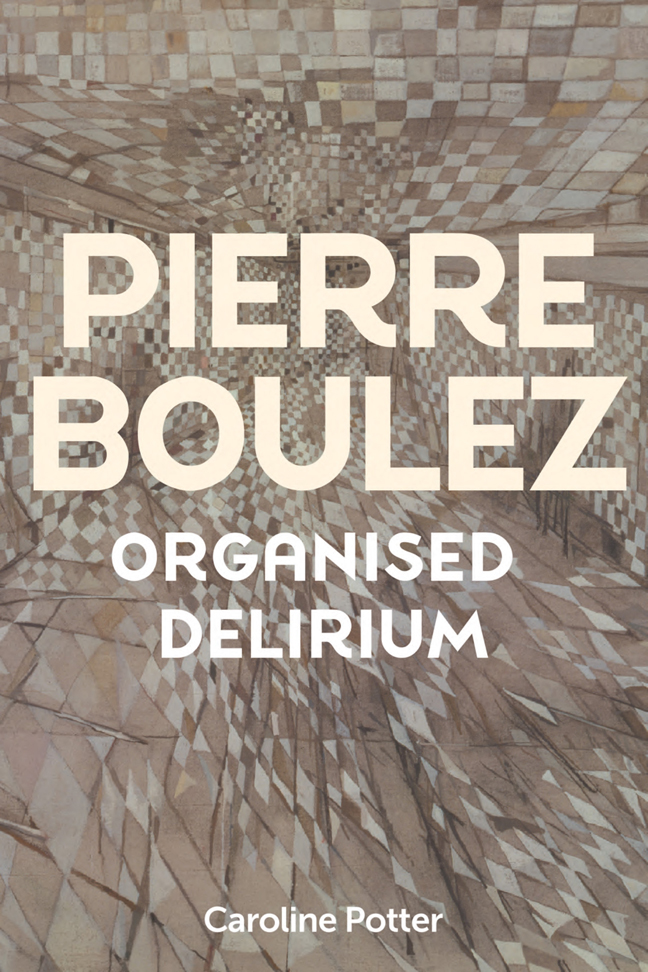Book contents
- Frontmatter
- Contents
- List of illustrations
- Acknowledgements
- Introduction: Organised Delirium
- 1 Surrealism in the 1930s and 40s
- 2 ‘A flayed lion’: Boulez as student
- 3 Serialism and surrealism: Boulez's instrumental music 1946–8
- 4 Fureur et mystère: the first versions of Boulez's René Char settings
- 5 The charm of numbers: continuing threads in Boulez's later music
- Select bibliography
- Index
1 - Surrealism in the 1930s and 40s
Published online by Cambridge University Press: 21 February 2024
- Frontmatter
- Contents
- List of illustrations
- Acknowledgements
- Introduction: Organised Delirium
- 1 Surrealism in the 1930s and 40s
- 2 ‘A flayed lion’: Boulez as student
- 3 Serialism and surrealism: Boulez's instrumental music 1946–8
- 4 Fureur et mystère: the first versions of Boulez's René Char settings
- 5 The charm of numbers: continuing threads in Boulez's later music
- Select bibliography
- Index
Summary
Surrealism Is All About liberation of the mind, freedom from constraints, accessing the irrational, privileging dreams, the fantastic, the marvellous, and embracing chance. André Breton is the author who is most closely associated with surrealism, as the author of the two most celebrated Surrealist Manifestos (1924, 1929) and self-appointed leader of the movement in Paris, but he drew on the ideas of many precursors, and the origins of the word ‘surrealism’ can be traced back to Guillaume Apollinaire (1890–1918).
In fact, the word first came to public attention in Apollinaire's programme note for a Ballets Russes premiere, Erik Satie's ballet Parade (1917), a collaboration with Picasso, Massine and Cocteau. This ballet was rooted in street and circus entertainment, though the American Girl character came straight out of the movies, and Picasso's oversized cardboard box costumes – a literal twist on cubism – gave it a strong contemporary edge. The Ballets Russes audience greeted the work with catcalls: they did not expect to see highly trained ballet dancers performing acrobatic moves and gestures such as using a typewriter, and the inclusion of shotgun and siren sounds in an entertainment context in 1917 was, to say the least, provocative. Writing in Vanity Fair that year, Satie himself ruefully described his music as ‘a background to throw into relief the noises which [Cocteau] considers indispensable to the surrounding of each character with his own atmosphere’.
While Cocteau described Parade as ‘un ballet réaliste’, Apollinaire described Satie's collaboration as follows:
From this new alliance […] there resulted in Parade a kind of sur-realism which I consider the departure point of a series of demonstrations of this new spirit which […] promises to change arts and customs from top to bottom in an entirely vigorous way, because good sense wants them to be at least on the same level as scientific and industrial progress. […] Picasso's decor and cubist costumes demonstrate the realism of his art. This realism, or cubism, as you wish, is what has most deeply stirred the arts in these last ten years.
Apollinaire's hyphenated neologism ‘sur-réalisme’ is something ‘more than real’, something that pushes boundaries and could even be termed a kind of research project. It is something that is unequivocally modern, a new way of seeing the world, which creates something new through an alliance of different art forms and the juxtaposition of different ideas.
- Type
- Chapter
- Information
- Pierre Boulez , pp. 19 - 58Publisher: Boydell & BrewerPrint publication year: 2024

